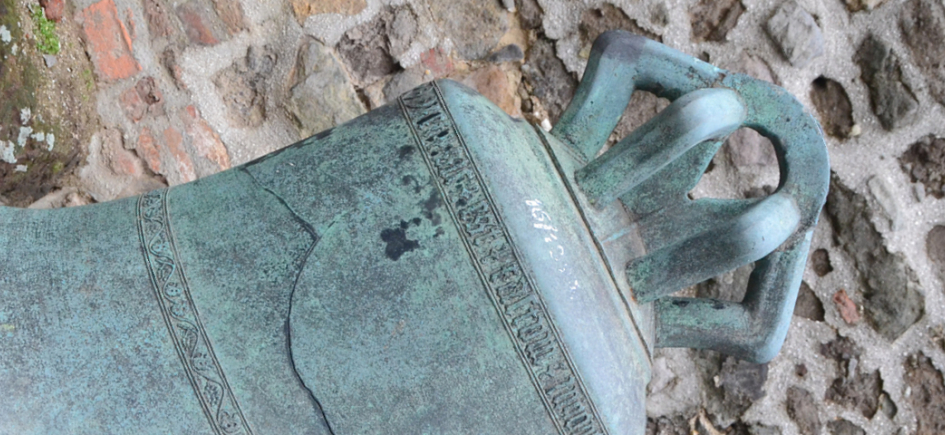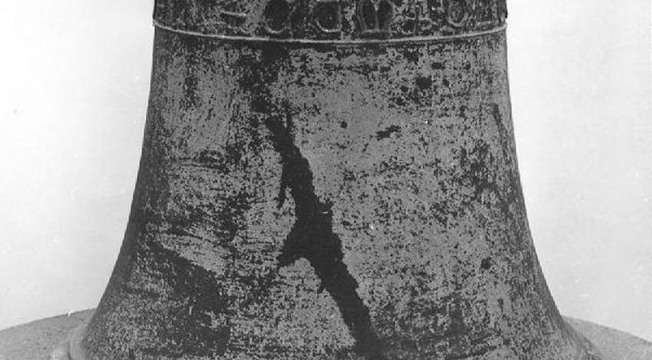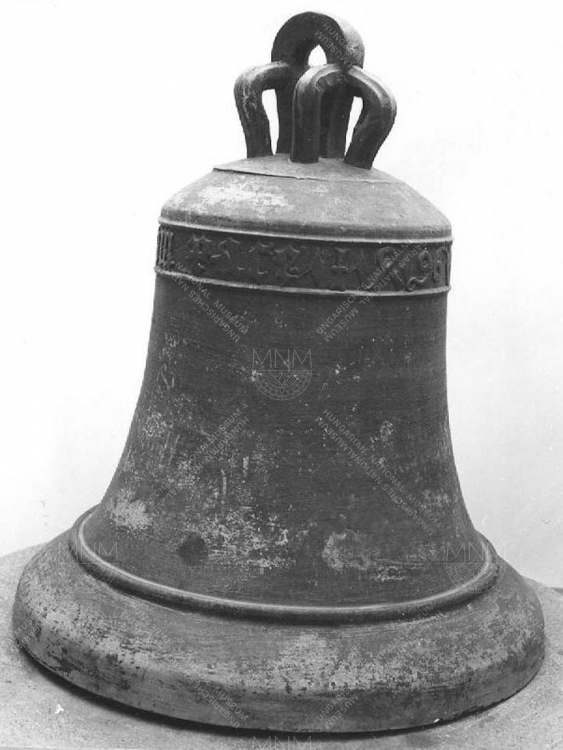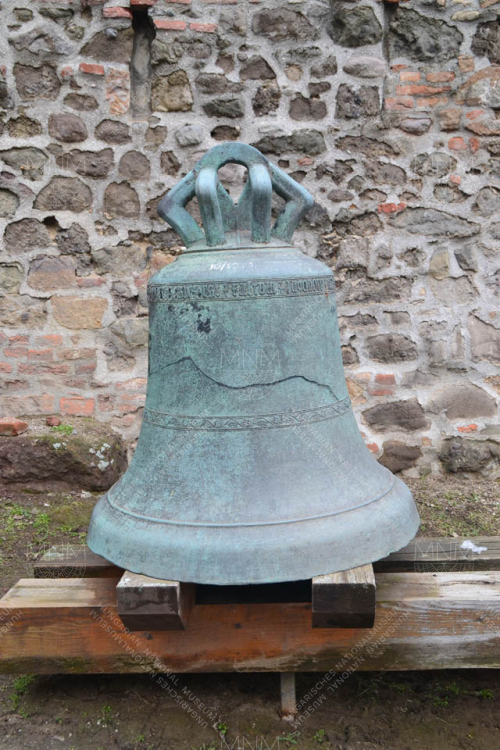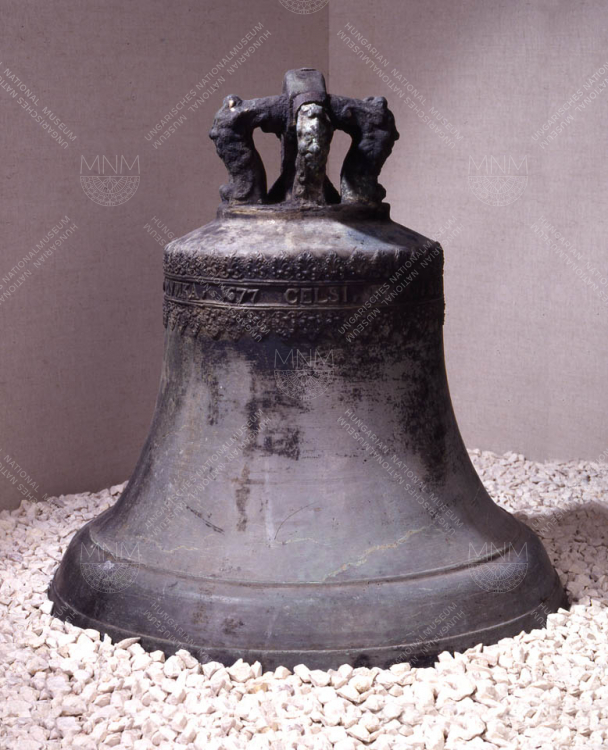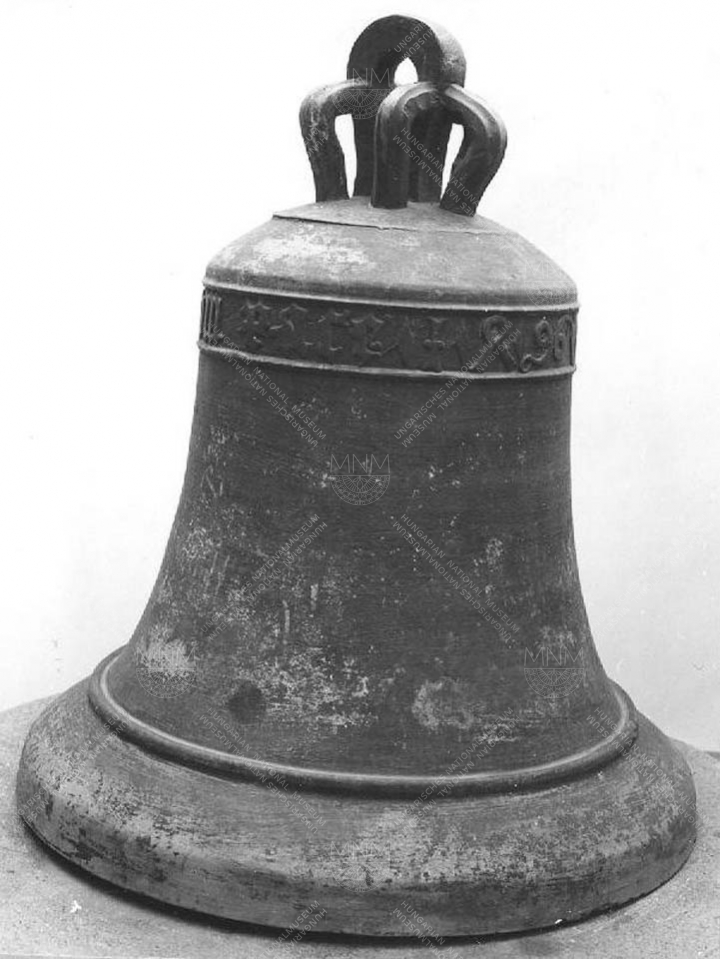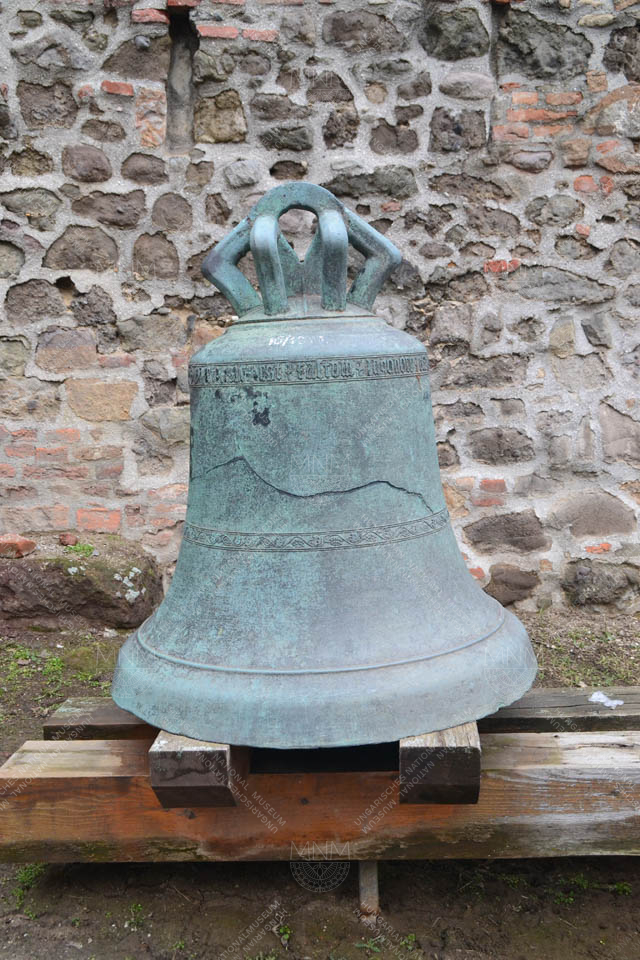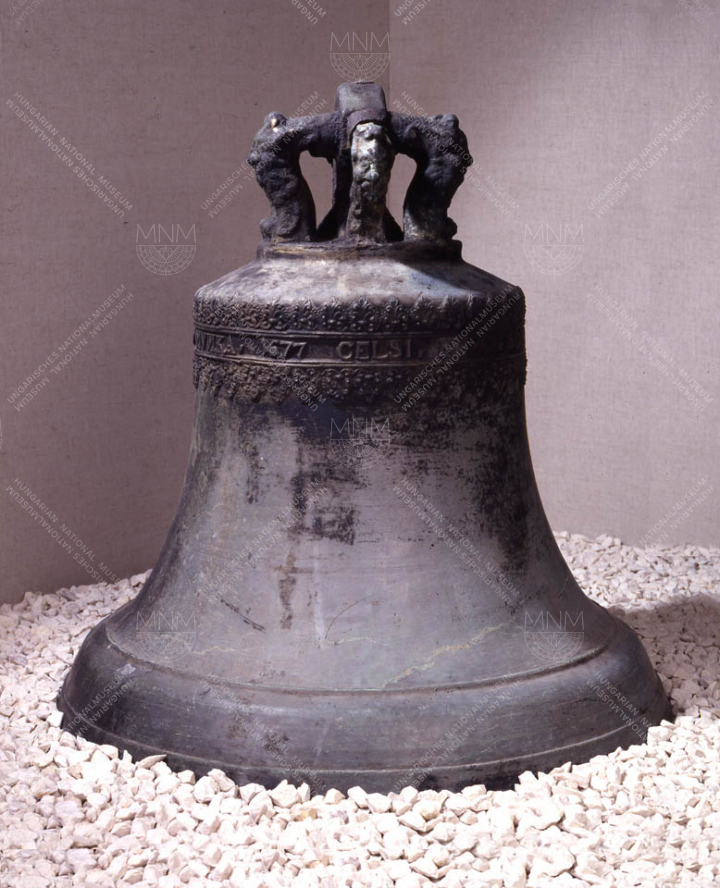
The beginnings of the Collection are connected with the work of Flóris Rómer (1815–1889), a significant figure in Hungarian museology and archaeology in the 19th century. Despite these early beginnings, by 1915 only eight bells had passed to the Museum. In 1916, in the period of so-called requisitioning during the First World War when bells were collected and melted down to make munitions, at least 27 bells were added to the Collection, because instead of being melted down, bells made before the year 1700 were handed over to the Museum. Thanks to this policy, the Collection contains bells from distant parts of the country, and also from settlements not now belonging to Hungary.
Consisting today of 46 pieces, the Church Bell Collection was affected by the ravages of the Second World War, with a number of bells melting in a fire which broke out in the Museum’s Lapidarium. The earliest piece in the Collection is a bell from Szentábrahám (today Avrămești, Romania) which lacks an exact date but which was probably made around the year 1400. Although many of the bells in the Collection are from the 15th century, with dates in some cases, most are 16th–17th-century pieces; a few are later still.
The inscription ‘O rex gloriae veni cum pace’ (‘O king of glory, come in peace’) features on most of the bells, but names of bell founders, of persons ordering the bells, and of settlements using them also appear in inscriptions. Most of the bells are on display at the Estergom Castle Museum, an affiliate of the National Museum, while a few are placed in rooms in the National Museum that are open to visitors.








